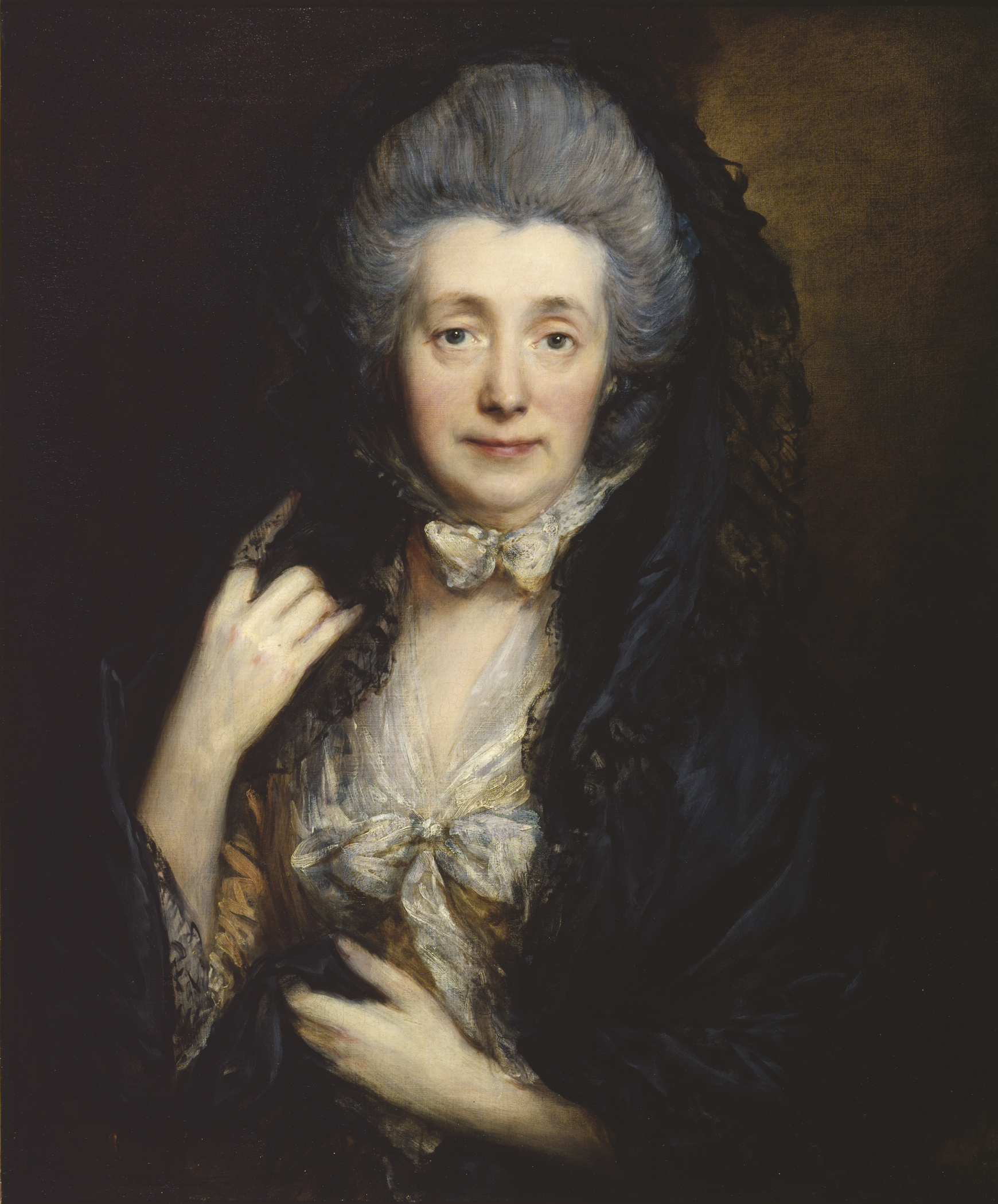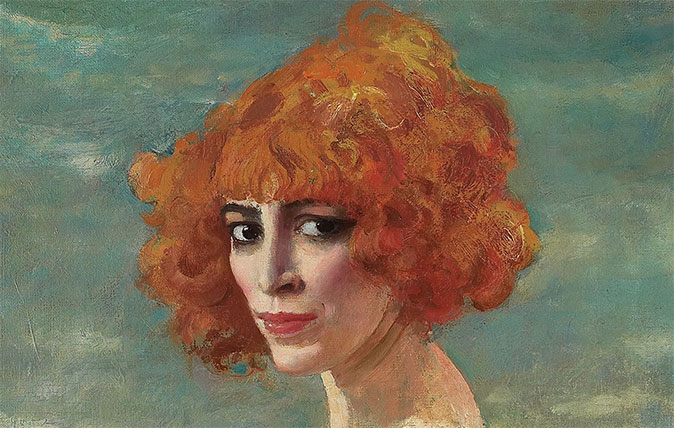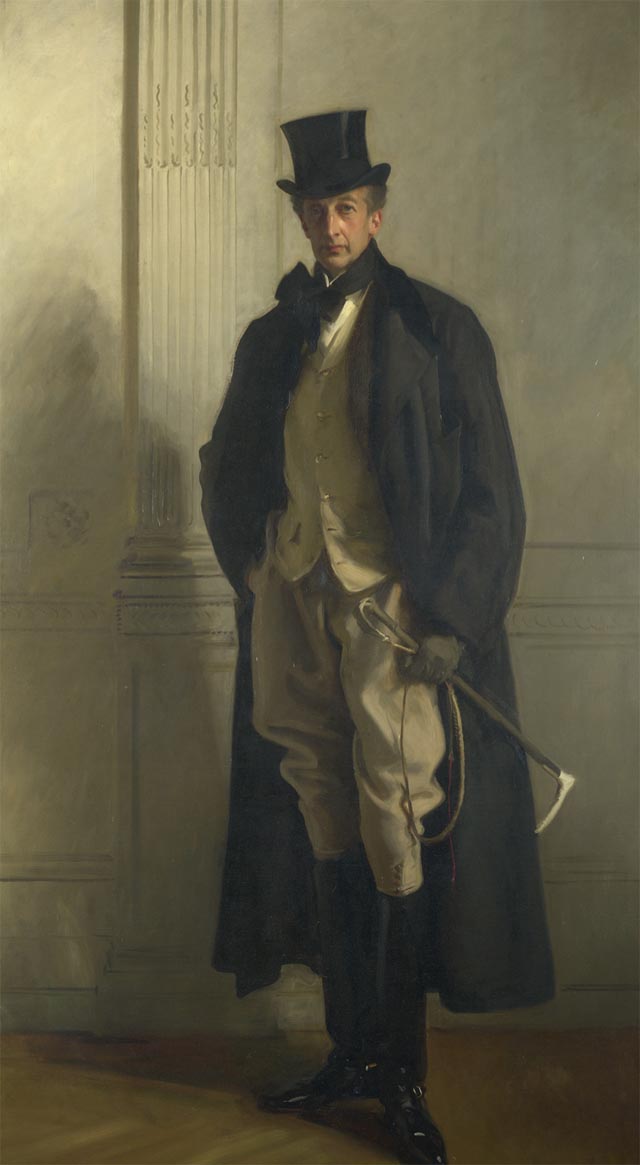My favourite painting: Sue Barnes
Sue Barnes, the founder of Lavender Green Flowers, chooses a compelling portrait by Thomas Gainsborough.


Sue Barnes on Portrait of Mrs Gainsborough by Thomas Gainsborough
'Margaret’s eyes seem to follow you around the room, because this portrait was painted by the sitter looking directly at the artist. That was incredibly rare at the time and only really possible because of the relationship between the two of them. Margaret was the illegitimate daughter of a duke and her income from his estate helped launch and sustain Gainsborough’s career. She was that rarest of creatures in the 18th century, an astute businesswoman. She was 50 when this was painted, attractive, but not an outstanding beauty. Her clothes are beautifully painted, but by no means exquisite. There is none of the materialistic paraphernalia that surround a lot of other portraits, but the way Gainsborough shows his absolute love and respect for the woman with whom he shared his life and business is priceless.'
Sue Barnes is the founder of Lavender Green Flowers.
John McEwen on Portrait of Mrs Gainsborough
Margaret Burr, illegitimate and only daughter of Henry, 3rd Duke of Beaufort, married Gainsborough in 1746, when she was 18 and expecting their first child, who died aged two.
The Duke himself had died the previous year, leaving Margaret an annuity of £200. As Gainsborough, one year her senior, was struggling to make a living as a landscape painter, his artistic preference, the annuity was a considerable help.
He was still borrowing against it in 1752, by which time the couple had had two further daughters and commissioned portraits, or ‘phizmongering’ as he derisively called it, were proving more profitable than his landscapes.
By his own admission, Margaret was his strength and stay. She had a better head for business and stood firm when he strayed and contracted venereal diseases, as well as through the long anxiety of their daughters’ mental instability. ‘I shall never be a quarter good enough for her if I mend a hundred degrees,’ he wrote.
These domestic traumas were combined with a warring relationship with the Royal Academy, despite his founding membership, and a contempt for phizmongering — his commissioners having ‘but one part worth looking at, and that is their Purse’ — a practice that, nevertheless, eventually earned him fame and a Pall Mall address.
No other 18th-century artist left so many portraits of his extended family, even to the extent of their beloved pets. They serve as proof of his affection, yet they are so often unfinished that it is suggested Margaret intervened to remind him of his professional commitments.
Sign up for the Country Life Newsletter
Exquisite houses, the beauty of Nature, and how to get the most from your life, straight to your inbox.
This portrait may have celebrated her 50th birthday. The pose derives from one traditionally suggesting chastity, thus wittily at odds with his own behaviour.

Credit: Bridgeman images
My favourite painting: Joanna Trollope
'It looks to me as if painter and subject were very well matched '

My favourite painting: David Starkey
David Starkey shares the one painting he would own, if he could
Carla must be the only Italian that finds the English weather more congenial than her native country’s sunshine. An antique herself, she became Country Life’s Arts & Antiques editor in 2023 having previously covered, as a freelance journalist, heritage, conservation, history and property stories, for which she won a couple of awards. Her musical taste has never evolved past Puccini and she spends most of her time immersed in any century before the 20th.
-
 Six rural properties with space, charm and endless views, as seen in Country Life
Six rural properties with space, charm and endless views, as seen in Country LifeWe take a look at some of the best houses to come to the market via Country Life in the past week.
By Toby Keel
-
 Exploring the countryside is essential for our wellbeing, but Right to Roam is going backwards
Exploring the countryside is essential for our wellbeing, but Right to Roam is going backwardsCampaigners in England often point to Scotland as an example of how brilliantly Right to Roam works, but it's not all it's cracked up to be, says Patrick Galbraith.
By Patrick Galbraith
-
 'As a child I wanted to snuggle up with the dogs and be part of it': Alexia Robinson chooses her favourite painting
'As a child I wanted to snuggle up with the dogs and be part of it': Alexia Robinson chooses her favourite paintingAlexia Robinson, founder of Love British Food, chooses an Edwin Landseer classic.
By Charlotte Mullins
-
 The Pre-Raphaelite painter who swapped 'willowy, nubile women' for stained glass — and created some of the best examples in Britain
The Pre-Raphaelite painter who swapped 'willowy, nubile women' for stained glass — and created some of the best examples in BritainThe painter Edward Burne-Jones turned from paint to glass for much of his career. James Hughes, director of the Victorian Society, chooses a glass masterpiece by Burne-Jones as his favourite 'painting'.
By Charlotte Mullins
-
 'I can’t look away. I’m captivated': The painter who takes years over each portrait, with the only guarantee being that it won't look like the subject
'I can’t look away. I’m captivated': The painter who takes years over each portrait, with the only guarantee being that it won't look like the subjectFor Country Life's My Favourite Painting slot, the writer Emily Howes chooses a work by a daring and challenging artist: Frank Auerbach.
By Toby Keel
-
 My Favourite Painting: Rob Houchen
My Favourite Painting: Rob HouchenThe actor Rob Houchen chooses a bold and challenging Egon Schiele work.
By Charlotte Mullins
-
 My Favourite Painting: Jeremy Clarkson
My Favourite Painting: Jeremy Clarkson'That's why this is my favourite painting. Because it invites you to imagine'
By Charlotte Mullins
-
 The chair of the National Gallery names his favourite from among the 2,300 masterpieces — and it will come as a bit of a shock
The chair of the National Gallery names his favourite from among the 2,300 masterpieces — and it will come as a bit of a shockAs the National Gallery turns 200, the chair of its board of trustees, John Booth, chooses his favourite painting.
By Toby Keel
-
 'A wonderful reminder of what the countryside could and should be': The 200-year-old watercolour of a world fast disappearing
'A wonderful reminder of what the countryside could and should be': The 200-year-old watercolour of a world fast disappearingChristopher Price of the Rare Breed Survival Trust on the bucolic beauty of The Magic Apple Tree by Samuel Palmer, which he nominates as his favourite painting.
By Charlotte Mullins
-
 My favourite painting: Andrew Graham-Dixon
My favourite painting: Andrew Graham-Dixon'Lesson Number One: it’s the pictures that baffle and tantalise you that stay in the mind forever .'
By Country Life